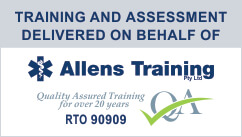Westpac Rescue Rashie

THERE are no more excuses.
More than half of Australian parents say they wouldn’t know how to resuscitate their child if they stopped breathing so Westpac is taking action.
Drowning deaths peaked at 49 nationally last year, so the time is right for the Rescue Rashie, a children’s rash vest printed with step-by-step instructions for how to perform cardiopulmonary resuscitation (CPR).
Almost 56 per cent of parents with kids aged between two and eight said they wouldn’t know how to do CPR in the event of an emergency, a survey has found, despite children under four accounting for 42 per cent of non-fatal drownings.
Developed with the help of paediatric first aid training and awareness organisation CPR Kids, the bright red rash vests provide thorough instructions for how to save a child’s life.
They are also a constant reminder to parents about water safety, said CPR kids founder Sarah Hunstead.

Ky Hurst with Chloe Meredith, Jack Otter, Mitchell Meredith and Taylor Otter promoting swimming safety. Photo Jeremy PiperSource:News Corp Australia
“Adults are nervous about what to do (in the event of a child losing consciousness) but the Rescue Rashie puts the instructions right on their child’s chest,” Ms Hunstead said.
“Not only will it give parents more confidence to go straight into CPR but when they are ding the washing or folding it up and putting it away it’s reminding them about the steps for CPR.”
Two thirds of parents did not know the correct compression to breath ratio (30 to 2) for CPR, the survey of 1000 parents also found.
Hunstead said it is important to call an ambulance but, especially in a drowning accident, you cannot wait for help.
“While you wait for the ambulance oxygen is not circulating so you need to give breaths and you’ve got to push hard and fast on their chest as soon as possible,” she said.
Ironman and Olympic swimmer Ky Hurst said water safety is number one when it comes to his kids.
“As much as I love the water and have spent my life around it I know that accidents can happen,” he said.
“The instructions on the front (of the rashie) and the bright red colour serve as a constant reminder of how to keep your children safe.”

Hurst competed in the Men’s 10km swimming at the London Olympics. Picture: News CorpSource:News Limited
Drowning deaths in children under five jumped by 32 per cent nationally in 2016/17.
Almost 300 people drowned in the 12 months to June 30 — almost 20 per cent of those in December, according to the Royal Lifesaving Society.
While many of our beaches are patrolled with qualified Lifesavers, almost as many people drown in swimming pools (44) as at the beach (50) so it is up to parents to know what to do in the event of an accident.
Westpac, which has sponsored the Lifesaver Rescue Helicopter Service for 44 years, wanted to take the next step in their commitment to water safety and educate parents about water safety, said Jessica Power, Westpac State General Manager NSW.
The UPF 50+ vests are being sold for $35 with proceeds going to Take Heart Australia to fund CPR training.
Pure Profile conducted the nationwide survey of 1,000 Australian parents who have children between the ages of two and eight years old.
